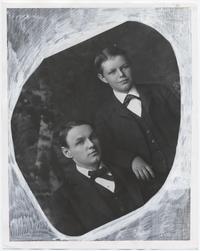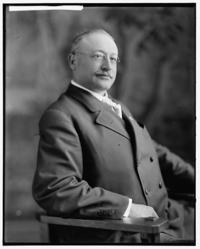State & Federal Cases
In addition to his most famous cases Clarence Darrow participated in numerous federal cases and state cases in jurisdictions outside of Illinois. While not nearly as well known as his most prominent cases, several of these cases involved important legal issues. Because of his fame Darrow was nearly drawn into several interesting cases but for various reasons he did not participate. This section describes some of these other cases and includes relevant documents and photos.
|
Briefs, petitions and docket information for Brockway v. Jewell, a case which was appealed to the Supreme Court of Ohio in 1888. These documents include two handwritten briefs submitted by C. S. Darrow and E. B. Leonard who together represented James Brockway. Courtesy of the Ohio Historical Society.
Transcript of Testimony Before the Coroner's Jury (Eastland Disaster).
Coroner's inquest into Eastland disaster held July 24 to July 29, 1915.
Cross-Examination of William D. Haywood in United States. v. Haywood (1918).
Testimony of Big Bill Haywood in his trial for violating wartime alien and sedition acts. Clarence Darrow did not represent Haywood in this trial but he did defend Vincent St. John on appeals in 1918 and 1920 after Haywood, St. John and about ninety-eight other defendants were convicted.
McDonald and others were indicted for violating a federal lottery law. McDonald was defended by Collins, Goodrich, Darrow & Vincent and L.S. Metcalf. Thomas Milchrist prosecuted the case.
Macdonald v. United States, 63 Fed. 426 (1894).
MacDonald and others were convicted of violating a federal lottery law. Darrow helped defend MacDonald at trial and on this appeal. Counsel for this appeal included Collins, Goodrich, Darrow & Vincent as well as several other lawyers. NOTE: The lower court case used the spelling of McDonald.
Brockway v. Jewell, 39 N.E. 470 (Ohio 1894).
Brockway v. Jewell is the first case Clarence Darrow was involved in that resulted in a published opinion.
Crimp v. McCormick Const. Co., 71 F. 356 (7th Cir. 1896).
At issue is the construction of a contract made on July 24, 1892, between McCormick Construction and R. P. McCormick, the first party, and W. G. Crimp, the second party. Soon after the making of the contract, Crimp became sick and died the following December. The question is whether, by force of that contract, Crimp became an outright purchaser of stock, or only a creditor of the company, taking the stock as collateral. W. E. Church, Frank S. Weigley, Chas. M. Sturges, Loren C. Collins, Adams A. Goodrich, Clarence S. Darrow, Wm. A. Vincent, John H. Hamline, Frank H. Scott, and Frank E. Lord, for appellees.
Crimp v. McCormick Const. Co., 72 F. 366 (7th Cir. 1896).
Suit by Eugenia Crimp, as executrix of the will of W. G. Crimp, against the McCormick Construction Company and others, to determine the rights of the parties in the assets of the corporation. W. E. Church, Tenney, McConnell & Coffeen, Collins, Goodrich, Darrow & Vincent, A Burton Stratton, and McGlasson & Beitler, for appellees.
City of Chicago v. Baker, 86 F. 753 (7th Cir. 1898).
Baker won damages because a city ordinance closing a street in Chicago at the place where it was crossed by a railroad track injured his property. The City of Chicago appealed. Clarence S. Darrow, for defendant in error.
United States ex rel. Turner v. Williams, 126 F. 253 (C.C.N.Y. 1903).
This case involved the immigration act of March 3, 1903, c. 1012, Sec. 2, 32 Stat. 1214, which increased the number of classes of aliens who were to be excluded from admission to the United States. Among these additional classes are found "polygamists, anarchists, or persons who believe in or advocate the overthrow by force or violence of the government of the United States or of all government or of all forms of law, or the assassination of public officials." The court held that the law was constitutional. In addition, the court held that a decision of the immigration board of special inquiry that an immigrant is an anarchist is not open to review by the United States Circuit Court in habeas corpus proceedings. Clarence S. Darrow and Edgar Lee Masters unsuccessfully appealed this decision to the United States Supreme Court in United States ex rel. Turner v. Williams, 194 U.S. 279 (1904).
Appellant Brief and Argument in U S ex rel Turner v. Williams, 194 U.S. 279 (1904).
Clarence Darrow and his law partner Edgar L. Masters argued unsuccessfully to prevent the deportation of anarchist John Turner to Great Britain. The evidence against Turner included papers in his possession that referred to "The Legal Murder of 1887" (this refers to the execution of the anarchists in the Haymarket Affair) and The Essentials of Anarchism. Additionally, there was a note regarding a mass meeting at which speeches would be given by Turner, John Most and several others. The Court rejected the claim that deportation for his beliefs violated the First Amendment.
U.S. ex rel. Turner v. Williams, 194 U.S. 279, 24 S.Ct. 719 (1904).
John Turner was arrested and detained for deportation under Sections 2 and 38 of An Act to Regulate the Immigration of Aliens into the United States, (32 Stat. at L. 1213, chap. 1012). Clarence Darrow and his longtime law partner Edgar L. Masters unsuccessfully argued that the act was unconstitutional because it contravened sec. 1 of article 3 and the 1st, 5th, and 6th amendments to the Constitution.
Blair v. City of Chicago, 201 U.S. 400 (1906).
Dispute about whether an 1865 amendment to an 1859 Illinois law granted the railways the right to use Chicago's city streets for 99 years. Clarence S. Darrow, Glenn Edward Plumb, Edgar Bronson Tolman, and James Hamilton Lewis argued for the City of Chicago that no such irrevocable grant existed, and that city council authorization was required for use of the streets.
Warren v. United States, 183 Fed. 718 (1910).
William Goebel was a candidate in a disputed Kentucky gubernatorial election of 1900. William Taylor was initially declared the winner but the Kentucky General Assembly reversed the election results and gave the victory to Goebel. The day before he was to be sworn in as governor, Goebel was shot and mortally wounded. He was sworn in the next day but died on February 3, 1900. Suspicion was directed at deposed governor Taylor, who fled to Indianapolis, Indiana. The governor of Indiana refused to extradite Taylor and he was never investigated about his possible role in a plot to kill Goebel. Taylor later became a successful lawyer in Indiana and he was pardoned by Governor Augustus E. Willson in 1909.
Warren was a well-known socialist who believed that Taylor had murdered Goebel. Warren was convicted of sending "nonmailable matter" through the mail because he sent an envelope which displayed writing that was of a "scurrilous, defamatory, and threatening character". On the envelope was printed in large red letters: "$1,000 Reward will be paid to any person who kidnaps Ex. Gov. Taylor and returns him to Kentucky authorities." Warren was sentenced to six months hard labor and a $1,500 fine. Darrow and other lawyers represented Warren in an unsuccessful appeal.
California-Calaveras Mining Co. v. Walls, 170 Cal. 285 (1915).
Clarence Darrow and several other attorneys represented a corporation in this California lawsuit over a $100,000 promissory note.
Stewart v. Ramsay (1916).
Brief written and submitted by Clarence Darrow to the United States Supreme Court. Darrow, the only attorney listed as representing Ramsay, won this case.
Stewart v. Ramsay Record and Brief (1916).
Transcript of Record and Brief of Plaintiff in Error, in the case of Stewart v. Ramsay before the United States Supreme Court. Clarence Darrow won this case for Ramsay.
Stewart v. Ramsay, 242 U.S. 128 (1916).
Stewart had sued Ramsay in a federal court in Illinois. Ramsay was from Colorado but he came to Illinois to testify as a witness in another case and Stewart served process on Ramsay a few minutes after Ramsay testified in the other case. Clarence Darrow successfully argued that process could not be served in this manner because a witness coming from another state or jurisdiction is exempt from the service of civil process while in attendance upon court, and during a reasonable time in coming and going. Darrow is the only attorney listed for Ramsay.
Town Lot Co. v. Pettigrew, 168 N.W. 30 (S.D. 1918).
P. W. Scanlan and Clarence S. Darrow were counsel for former South Dakota Senator Richard Pettigrew in this action before the Supreme Court of South Dakota involving a dispute over land located in Salem, South Dakota.
United States v. St. John, 254 Fed. 794 (7th Cir. 1918).
Vincent St. John and 100 others, including Big Bill Haywood, were convicted for violating the Espionage Act. Darrow represented St. John in this proceeding to try to secure St. John's release on bail, which was denied.
In re St. Joseph-Chicago S.S. Co. The Eastland, 262 F. 535 (1919).
Civil case arising from the Eastland disaster.
Bianchi v. State, 169 Wis. 75 (1919).
Clarence Darrow, Peter Sissman and a Milwaukee attorney submitted a brief, and Clarence Darrow and the Milwaukee attorney made an oral argument, for Bianchi and the other defendants involved in this prosecution for conspiracy and criminal anarchy.
St. John v. United States, 268 Fed. 808 (7th Cir. 1920).
Vincent St. John and 100 others, including Big Bill Haywood, were convicted for violating the Espionage Act. In this per curiam opinion the court refers to Haywood v. United States, 268 Fed. 795, for its reasoning. Clarence Darrow represented St. John in this appeal. Haywood was convicted of violating wartime alien and sedition acts and was sentenced to 20 years in prison in 1918. He served a year at Leavenworth, but while out on appeal in 1921 he jumped bond and fled to the Soviet Union, where he remained until his death in 1928.
Carpenter v. State of Nebraska, 106 Neb. 742 (1921).
Carpenter, a practitioner of Napropathy, was convicted for the illegal practice of medicine. Doctors of Napropathy evaluate and treat neuro-musculoskeletal conditions and are connective tissue specialists but are not medical doctors. Clarence Darrow worked on Carpenter's appeal but his conviction was affirmed by the Nebraska Supreme Court.
Burns et al. v. State of Indiana,192 Ind. 427 (1922).
Clarence Darrow participated as co-counsel in an appeal for four defendants convicted of murder during a bank robbery in Indiana. The Supreme Court of Indiana affirmed the convictions.
United States v. Druggan (1924).
Clarence Darrow and Floyd Lanham represented the defendants charged with contempt of court for violating a temporary injunction.
Eckman v. State, 191 Wis. 63 (1926).
Clarence Darrow and another Chicago attorney appealed a murder conviction before the Wisconsin Supreme Court but the conviction was affirmed.
State v. Winters Briefs.
Briefs for State of Vermont v. John Winters (State v. Winters, 102 Vt. 36, 145 A. 413 (1929)).
State v. Winters, 102 Vt. 36, 145 A. 413 (1929).
John Winters was convicted of murder in the first degree. On appeal before the Supreme Court of Vermont, Clarence Darrow and several other attorneys got the judgment and verdict set aside and a new trial granted.
State v. Bittner, 209 Iowa 109, 227 N.W. 601 (Iowa, 1929).
Bittner was convicted of murder in the first degree and sentenced to life in prison. One of his points on appeal was that a conversation he had with Clarence Darrow while in jail was confidential. The Supreme Court of Iowa ruled: "It happened that at the time the defendant, Bittner, was in the care and keeping of the sheriff at the Webster county jail, Clarence Darrow of Chicago was in the city of Ft. Dodge attending to some legal business. The defendant's mother, learning of the presence of Darrow, solicited him to interview her son (defendant Bittner). Out of the kindness of his heart, and probably due to his intense interest in the welfare of accused persons, he met the request and did visit the defendant at the jail. The conversation was overheard by the son of the sheriff, who was then and there acting as a deputy. Darrow is quoted as making the following statement to Bittner: "Well, I promised your mother that I would get over here and talk to you, but I am very tired. I have been very busy all day and it is late, but I have just dropped in to give you a little encouragement, if I can, and suggest that you get an attorney and fight to the last ditch." The only question presented on this proposition is whether a confidential relation existed between Darrow and Bittner, and therefore what was said became a confidential communication. There is no basis in the record for such a claim. Darrow was not Bittner's attorney, and it is obvious that he visited the defendant in a friendly way and on account of the request made by the mother."
State of Tennessee ex rel Lea v. Brown, 292 U.S. 638, 54 S.Ct. 717 (1934).
Luke Lea was a United States Senator from Tennessee and the founder of the Nashville Tennessean and its first editor and publisher. During the Roaring Twenties, he became a major stockholder in numerous banks, all of which failed when during the Great Depression. Lea and several others including his son Luke Lea, Jr., were convicted of conspiracy to defraud a bank and misapply its funds and of fraudulent misapplication of its funds pursuant to a criminal conspiracy. They stood trial and were convicted on several counts in August 1931. Luke Lea was sentence to 6 to 10 years in prison.
Lea was allowed bond and to travel to his home to Nashville but when his appeal was unsuccessful he did not return to North Carolina. Instead he traveled about Tennessee searching for a judge who would grant a writ of habeas corpus. He was denied relief by a judge in Montgomery County and the Supreme Court of Tennessee affirmed the denial holding that North Carolina could extradite him as a fugitive from justice in State ex rel. Lea v. Brown, 166 Tenn. 669, 64 S.W.2d 841 (1933).
Clarence Darrow, Arthur Garfield Hays and several co-counsel petitioned for Writ of Certiorari to the U.S. Supreme Court which was denied on April 30, 1934. Ten days later Luke Lea and his son reported for imprisonment at Raleigh, North Carolina. Luke Lea was paroled in April 1936, and pardoned on June 15, 1937. Luke Lea maintained for the rest of his life that he and his son were wrongly prosecuted, they were made scapegoats for the bank collapse and the prosecution was politically motivated.
The Eastland, 78 Fed. 2d 984 (7th Cir. 1935).
Federal case involving some victims of the Eastland sinking 20 years after the disaster.
United States v. Dennis (1950).
Excerpt from a brief submitted to the 2nd Circuit in which Clarence Darrow is quoted about conspiracy law.
Boykin v. Alabama (excerpt from briefs, 1968).
Boykin was a 27-year-old African-American who pled guilty to five indictments for common-law robbery and was sentenced to death. The case was reversed in part by the United States Supreme Court because the record did not disclose that Boykin voluntarily and understandingly entered his plea of guilty. Boykin v. Alabama 395 U.S. 238, 89 S.Ct. 1709 (1969). Clarence Darrow is cited in these excerpts from the petitioner's brief and an NAACP brief on Boykin's behalf.
United States v. Barnes, 604 F.2d 121, 134 (2nd Cir. 1979).
This 1979 Second Circuit opinion includes a reference to Clarence Darrow in its explanation of the appellants argument: "Using as their authority Clarence Darrow, who believed that a juror's "nationality, his business, religion, politics, social standing, family ties, friends, habits of life and thought; the books and newspapers he likes and reads [even to his] method of speech, the kind of clothes he wears, the style of haircut, were important subjects for questioning, they contended that the court's inquiry was unduly (to the point of reversal) restrictive."
John Turner was arrested and detained for deportation as an alien anarchist under this act, specifically under sections 2 and 38. Clarence Darrow and Edgar Lee Masters argued unsuccessfully in U.S. ex rel. Turner v. Williams, 194 U.S. 279 (1904) that the act was unconstitutional because it was in contravention of sec. 1 of article 3 and the 1st, 5th, and 6th amendments of the Constitution.
Government investigation conducted from July 24 to August 5, 1915.
Commentary on Rudowitz extradition case after the final decision of the U.S. Department of State. The Russian government wanted to extradite Rudowitz from the United States for allegedly participating in the murder of three members of the same family, arson of the family's home and theft. Clarence Darrow and other lawyers worked on behalf of Rudowitz.
Right of the United States to Deport Aliens on the Ground of Anarchical Teachings (1920).
Law review article about the government's power to deport aliens accused of being anarchists. The article refers to the Turner v. Williams case.
Darrow in Vermont by Paul Gillies (1995).
Article detailing Clarence Darrow's involvement in the appeal of convicted murderer John Winters in State v. Winters, 102 Vt. 36, 145 A. 413 (Vt. 1929). Winters was sentenced to death but Darrow and two other lawyers succeeded in getting Winters' conviction overturned and remanded for a new trial. Winters was again convicted but was sentenced to life in prison instead of death. Published in The Vermont Bar Journal & Law Digest.
Account of the accident and the aftermath published in The Survey.
A Case that Should Stir Patriotism.
This brief account of the Christian Rudowitz extradition case includes quotes from Clarence Darrow's address before U.S. Commissioner Foote. Published in In Transit by Amalgamated Transit Union, Amalgamated Association of Street, Electric Railway and Motor Coach Employees of America (1908).
News story about Clarence Darrow's defense of several bank robbers charged with murder after a shootout with local townspeople following a botched robbery in Kosciusko County, Indiana. The defendants were convicted but they were given life sentences instead of the death penalty. Courtesy of the Warsaw Times-Union and YesterYear in Print
A Report Submitted by Charles Recht, Counsel, to the N.Y. Bureau of Legal Advice, January 15, 1919. The report discusses the 1904 U.S. ex rel Turner v. Williams case that Clarence Darrow and Edgar Lee Masters worked on.
Eastland Disaster Relief American Red Cross 1915-1918.
Final Report Eastland Disaster Relief Committee Chicago Chapter American Red Cross.
The Rudowitz Extradition Case by Frederick C. Giffin.
Article about a controversial case that arose in 1908 when the Russian consul in Chicago requested the extradition of a Russian refugee named Christian Ansoff Rudowitz who was living in Chicago. Rudowitz was wanted for murder and other crimes. Darrow along with several others helped defend Rudowitz from being extradited. Rudowitz name is sometimes spelled as Rudovitz. Published in volume 75 (No. 1) Journal of the Illinois State Historical Society (1982).
Photos - Key Figures

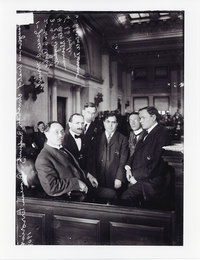

/wiki/Vincent_Saint
_John


In June 1919 Darrow testified before a special committee of the House of Representatives on Berger''s behalf. On November 10, 1919, the House of Representatives declared Berger was not entitled to take the oath of office as a Representative or to hold a seat because he was a convicted felon and war opponent. In response, Wisconsin held a special election to fill the vacant seat, and on December 19, 1919 Berger was elected. On January 10, 1920, the House again refused to seat him and the seat remained open until Republican William H. Stafford defeated Berger in the 1920 general election. In 1921 the United Supreme Court overturned the convictions because Judge Landis should have recused himself because of his prejudice against Germans. Berger ran again for Congress and defeated Stafford in 1922 and was reelected in 1924 and 1926. Library of Congress Prints and Photographs Division, LC-DIG-ggbain-31650.

Library of Congress Prints and Photographs Division, LC-DIG-hec-03701.

On December 27, after 19 minutes of deliberation, the jury found Remus not guilty on the sole ground of insanity. Because he was found insane the matter was certified to the probate court in Ohio. On December 30, 1927, the probate court found that Remus was then insane, and ordered him committed to the Lima State Hospital for the insane. On February 1, 1928, Remus filed a writ of habeas corpus to the Court of Appeals alleging that he was unlawfully restrained of his liberty. On March 30, 1928, the Court of Appeals found that the Remus was not insane, and ordered his discharge from the Lima State Hospital.
Some sources speculate that Remus was the inspiration for Jay Gatsby, the title character in F. Scott Fitzgerald's The Great Gatsby.
Photo from Bench and Bar of Illinois, 1920 (p. 345) (Hennessey, LeRoy).
Photos




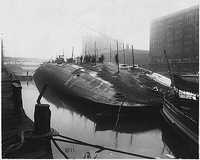


Library of Congress Prints and Photographs Division, LC-DIG-ggbain-05633.



/wiki/File:Lugi_Gallean2.jpg


In 1918, Clarence Darrow defended St. John when he appealed his conviction for conspiracy to violate the Espionage Act. St. John and about 100 others were convicted including Big Bill Haywood.
Caption for photo: "The greatest gold mine known. First sixty days operation, $6,000,000.00 production." Library of Congress Prints and Photographs Division, PAN US GEOG - Nevada no. 24.







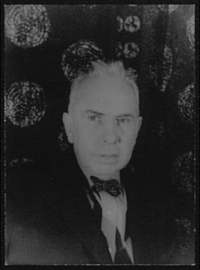

Darrow's article was cited in the appeal of a criminal trial that has been described as the first fully anonymous jury impaneled in the United States. This was the federal trial of a drug kingpin named Leroy "Nicky" Barnes in New York City. The court believed that the eleven defendants including Barnes, presented an unusually dangerous risk to the jurors and it took the extraordinary measure of hiding their identities. The defendants were convicted and appealed. On appeal they argued that they were denied due process because:
The district court's refusal to disclose petit jurors' identities, residence locales or ethnic backgrounds and the court's restrictive voir dire denied defendants due process." They also assert as reversible error the court's failure to inquire into the religion of each prospective juror. Using as their authority Clarence Darrow, who believed that a juror's "nationality, his business, religion, politics, social standing, family ties, friends, habits of life and thought; the books and newspapers he likes and reads ... (even to his) method of speech, the kind of clothes he wears, the style of haircut ...", were important subjects for questioning, they contended that the court's inquiry was unduly (to the point of reversal) restrictive. (Quoting Darrow, Attorney for the Defense, Esquire Magazine, May 1936).
Barnes was sentenced to life in prison but after he cooperated with the government this was reduced to 35 years and he was released from prison in 1998. Before his conviction Barnes came to be referred to as "Mr. Untouchable" and in 2007 he co-wrote his autobiography with that title. http://www.usdoj.gov
/dea/pubs/history/
1975-1980.html


In this photo, Governor Lehman and Attorney General Frank Murphy meet at National Parole Conference in Washington, D.C. Library of Congress Prints and Photographs Division, LC-DIG-hec-26499.












